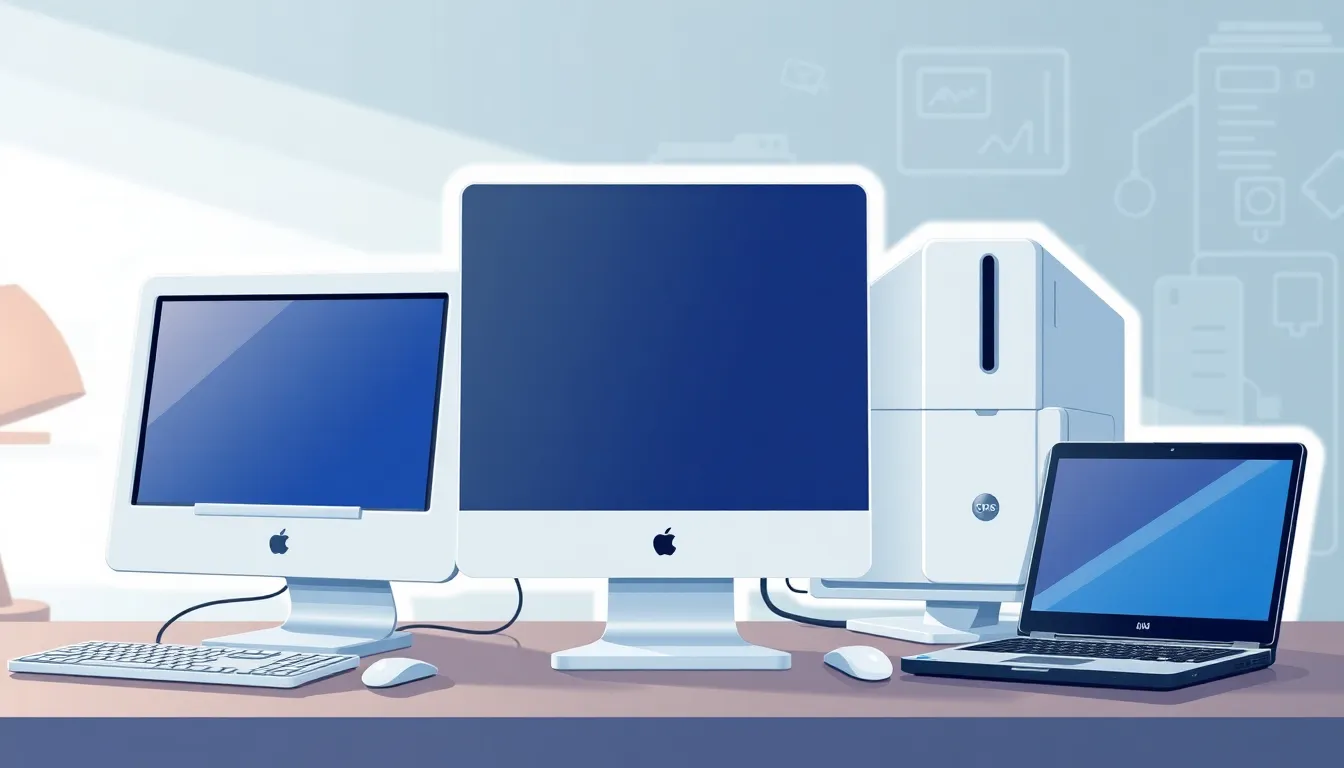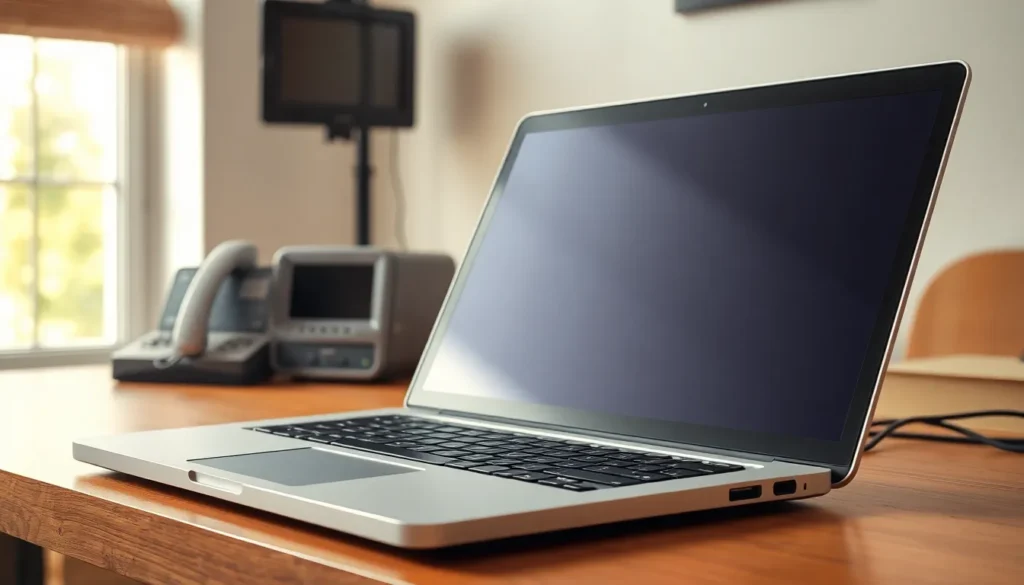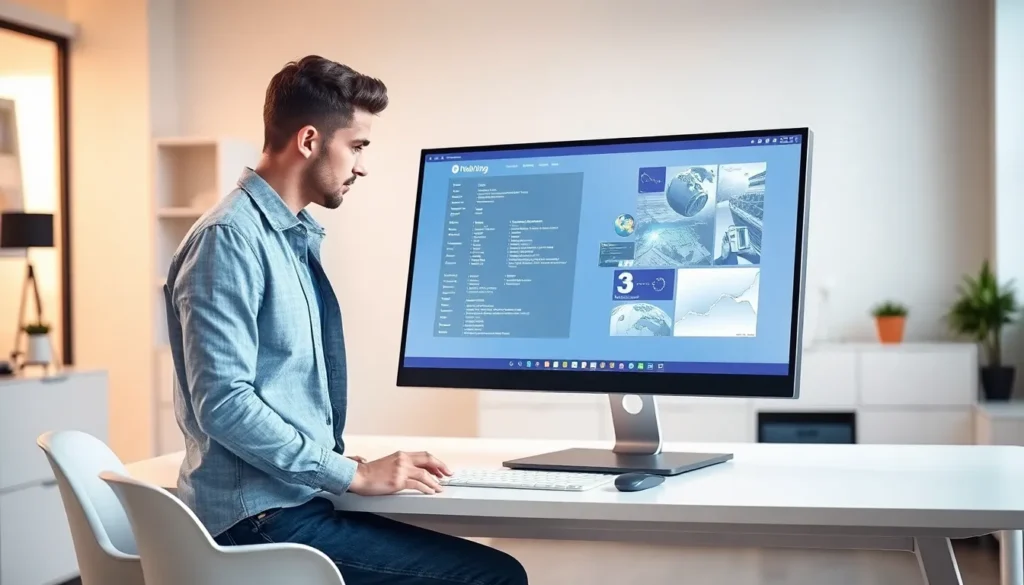Remember the 2000s? A time when flip phones ruled and dial-up internet was the soundtrack of our lives? Back then, computers weren’t just tools; they were gateways to a digital wonderland. From clunky desktops that took ages to boot up to the rise of laptops that could fit on your lap (who knew?), this decade saw tech evolve faster than a teenager’s mood swing.
2000s Computers
Computers in the 2000s marked significant advancements, showcasing innovations that changed personal and professional environments. This decade witnessed a shift towards portability and increased functionality, making technology more accessible.
Evolution of Technology
Technology evolved rapidly during the 2000s. Personal computers transitioned from bulky, slow models to sleek laptops and powerful desktops. Wireless internet began emerging, allowing users to connect without cords. Enhanced graphics capabilities catered to gamers and graphic designers, pushing the boundaries of creativity. Software also advanced, with operating systems becoming more user-friendly and efficient. The introduction of dual-core processors improved multitasking, allowing several applications to run simultaneously without lag.
Key Features of 2000s Computers
Several key features defined 2000s computers. USB ports became standard, simplifying connections for peripheral devices like printers and external drives. Flat-panel displays replaced CRT monitors, offering clearer visuals and saving desk space. DVD drives gained popularity, providing new avenues for media consumption. In addition, integrated Wi-Fi made internet access more convenient than ever. Security features, such as firewalls and antivirus software, became essential as cyber threats increased. These advancements transformed how users interacted with technology, making computers integral to everyday life.
Popular Computer Models

The 2000s featured several notable computer models that defined the era.
Desktops
Dell’s Dimension series gained popularity for its reliability and performance. Apple’s iMac introduced a sleek, all-in-one design that revolutionized aesthetics in personal computing. HP’s Pavilion line offered budget-friendly options without sacrificing performance. Users often opted for the eMachines brand due to its affordability and accessibility. Gateway’s Profile series also attracted attention with its compact design and powerful features. Enhanced graphics capabilities in these models catered to gamers and creative professionals alike, making desktop computers versatile tools for various applications.
Laptops
Apple’s MacBook created a significant impact with its thin profile and robust features. Dell’s Inspiron series provided a range of options for students and professionals seeking performance on the go. The IBM ThinkPad became synonymous with business reliability, often chosen for its durability and keyboard quality. Acer’s Aspire line offered competitive pricing, attracting budget-conscious users. Toshiba’s Satellite models focused on multimedia capabilities, appealing to those who valued entertainment. Each of these laptops integrated essential advancements like wireless connectivity and long battery life, reflecting the demands of a mobile workforce.
Operating Systems in the 2000s
The 2000s featured significant advancements in operating systems, drastically influencing user experiences.
Windows XP
Windows XP debuted in October 2001, quickly becoming the most popular operating system of its time. User-friendly design and stability marked its success, appealing to home users and businesses alike. Features like the Start menu, taskbar, and customizable desktop offered intuitive navigation. Enhanced multimedia capabilities supported gaming and media playback, making it a favorite for entertainment. Regular updates improved security, addressing the rising cyber threats of the decade. By 2006, Windows XP maintained a large market share despite the emergence of successors, illustrating its lasting impact and ubiquity in personal computing.
Mac OS X
Mac OS X launched in March 2001, revolutionizing the Apple experience with a sleek, modern interface. The introduction of Aqua, its visually appealing graphical interface, drew users in immediately. Built on a Unix foundation, it provided stability and robust performance, catering to creative professionals. Features like Dock for easy access to applications and Spotlight for quick file searches transformed user workflows. Applications optimized for this system included Safari, Mail, and iMovie, enhancing multimedia capabilities. Frequent updates ensured users benefited from improved security and features, positioning Mac OS X as a formidable contender in the operating systems landscape.
Impact on Gaming
Gaming in the 2000s experienced a monumental shift thanks to advancements in computer technology. Gamers enjoyed immersive experiences with superior graphics and performance.
Advancements in Graphics
Graphics capabilities improved significantly during this decade. Enhanced graphics cards like NVIDIA GeForce and ATI Radeon provided realistic visuals, allowing games to display intricate details and lifelike animations. Developers utilized advanced rendering techniques to create dynamic environments, improving overall gameplay. Games like “Half-Life 2” and “Doom 3” showcased these capabilities, pushing hardware to new limits. Additionally, the introduction of DirectX 9 further empowered developers to create rich and engaging graphics. Players witnessed a rise in high-definition content, which became standard by the decade’s end.
Introduction of Online Gaming
Online gaming transformed the gaming landscape in the 2000s. The proliferation of broadband internet connected players globally, fostering multiplayer experiences across genres. Titles such as “World of Warcraft” revolutionized online interactions, offering vast worlds and social connectivity. Consoles also embraced online features, enabling gamers to compete or collaborate seamlessly. Platforms like Steam emerged, simplifying game distribution and updates. This era set the stage for today’s multiplayer gaming culture, marking a significant evolution in how games are developed and played.
Conclusion
The 2000s were a transformative decade for computers that reshaped how people interacted with technology. The shift from bulky desktops to sleek laptops made computing more accessible and portable. Advancements in operating systems enhanced user experiences while gaming technology pushed creative boundaries.
As wireless internet became commonplace and security features evolved, computers solidified their importance in everyday life. The models and innovations from this era laid the groundwork for the technology we rely on today. Reflecting on the 2000s reveals not just nostalgia but also an appreciation for the rapid advancements that continue to influence the digital landscape.



